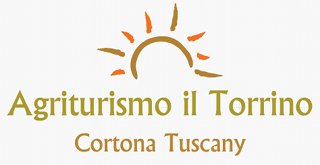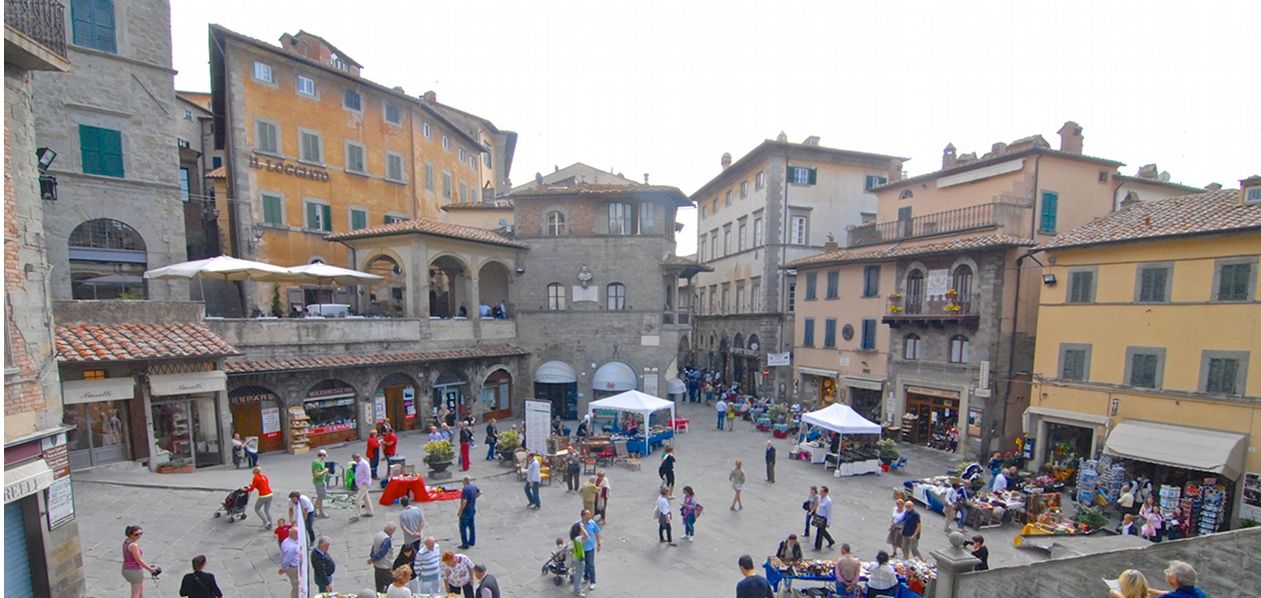Culture Cortona
Cortona offers a lot both from the landscape and also from the cultural and religious point of view.
In particular you can find the Etruscan Academy Museum, placed in Casali Palace, one of the oldest buildings of the town. It offers more than 2000 square meters of exhibiting space. You can admire, above all, the Etruscan chandelier, the ancient Egypt section and the eighteenth-century library. Other spaces are dedicated to the archeological finds. Bronze masterpieces, the well-known “Tabula Cortonensis” and equipments found in the archaic tumuli of the Cortona plain. An other important museum is the Diocese one, which is situated in front of the Cathedral. Inside you can find a sarcophagus of the II century d.C. ; a Virgin on the throne with her child and four angels, tablet painted by Pietro of Lorenzo during the XIV century: another tablet of the XIV century showing the histories of Margherita from Cortona; a cross painted on tablet, possibly a Piero Lorenzetti work; a table dated 1435, showing the Virgin with the Child; a tablet of the Angelico showing the Virgin with the Child on her knees and sat on the throne, completed by four pictures on Saints and high above the Annunciation and a Crucifixion; the Angelico Annunciation, considered as one of the most beautiful tablets of the Italian painting (in particular the architecture of the arcade and the garden in flowers on background with Adamo and Eva).
Further more you can admire Luca Signorelli works, born in Cortona in 1455 and here died in 1523. His works here exposed are: Grief on the Christ dead; Apostoles Communion, painted during 1512, where Giuda character rises while hiding the Host in his shoulder-bag such as a sign of his treason. In addition to the two mentioned museums we can find the Municipal Library of the Etruscan Academy: in its rooms you can admire the armorai bearings of the institution, put on a wood-tablet. The marble busts of Luca Signorelli and Francesco Benedetti, some publications of the XVII and XVIII century: among these there are degree thesis of the XVII and XVIII century of the German universities. Besides, more than 30.000 volumes, 1.000 parchments and 100 incunabula
The tombs in the territory. Tombs of the Etruscan, Hellenistic, Romanesque, Paleochristian and Medieval period. Those of the Etruscan period, called “Tumulus”, have been found at the foot of the hill: one at the south of Camucia ant two in Sodo locality. The tumuli are dated VII-IV century a:c:, and have been called First and Second Melons those from Sodo, and Melone François that from Camucia. The Hellenistic tombs, dated between the III-II century a.C. Are the Pitagora cave and the Angori Tanella. The Sarcophagus of the Diocese museum belongs to the Romanic period (II century d.C.), while the tomb of St. Vincenzo belongs to the paleochristian period and Beato Guido tomb belongs to the Medieval period
Sacred places Cortona
Cortona is the ideal destination for all the peopl...Read
Places Cortona
During thre second half of the nineteenth century ...Read
Culture Cortona
Cortona offers a lot both from the landscape and a...Read
Folklore Cortona
During the year Cortona presents many demonstrations. Among these: the fair of ...Read
Itineraries Cortona
Arezzo (30 Km.)...Read



